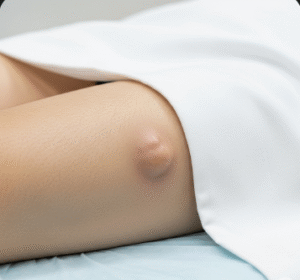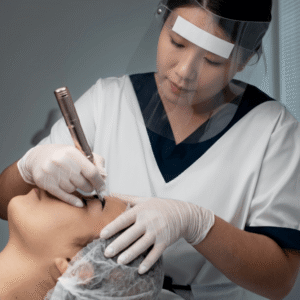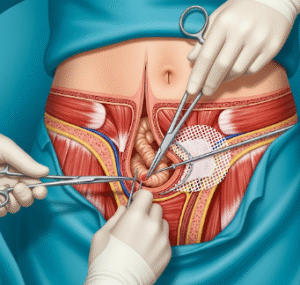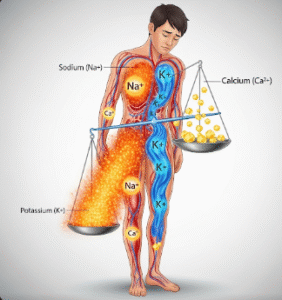Overview
Tooth pain, also known as dental pain or odontalgia, is a common condition experienced by people of all ages. It can range from mild discomfort to severe, throbbing pain and may indicate underlying dental or systemic issues. Causes include tooth decay, abscesses, gum disease, trauma, or nerve-related problems. In South Korea, advanced dental care facilities provide precise diagnostics, minimally invasive treatments, and comprehensive pain management strategies to identify the root cause and restore oral health. Prompt evaluation is essential to prevent complications and improve quality of life.
What is Tooth Pain?
Tooth pain refers to discomfort originating from the teeth, surrounding gum tissue, or jaw. It can be localized, affecting a single tooth, or diffuse, radiating to other areas of the mouth, jaw, or head. Tooth pain may be acute, occurring suddenly, or chronic, persisting over time. Depending on the cause, the pain can be sharp, throbbing, constant, or intermittent. Identifying the underlying source—whether dental, periodontal, or neurological—is critical for effective treatment. South Korean dentists use advanced imaging, pulp vitality testing, and thorough clinical evaluation to accurately diagnose the cause of tooth pain.
Symptoms
Symptoms associated with tooth pain may vary depending on the severity and cause:
- Sharp, throbbing, or dull pain in one or more teeth
- Pain when chewing or biting
- Sensitivity to hot, cold, or sweet foods and drinks
- Swelling of gums or face in cases of infection
- Redness or bleeding gums
- Fever or general malaise in severe infections
- Referred pain to the ear, jaw, or head
- Bad taste or pus drainage if an abscess is present
Recognizing these symptoms early and seeking professional evaluation in Korea helps prevent worsening conditions and complications.
Causes
Tooth pain can result from a variety of dental and systemic factors:
- Tooth decay (cavities): Bacterial infection eroding enamel and dentin
- Dental abscess: Pus accumulation from bacterial infection in the tooth or gums
- Gum disease (periodontitis or gingivitis): Inflammation and infection affecting supporting structures
- Dental trauma: Cracked, fractured, or chipped teeth
- Teeth grinding (bruxism): Causes enamel wear and jaw muscle strain
- Impacted teeth or wisdom teeth: Pressure and inflammation in surrounding tissues
- Temporomandibular joint (TMJ) disorders: Pain radiating from jaw joints to teeth
- Nerve-related issues: Pulpitis or trigeminal nerve irritation
- Systemic conditions: Sinus infection, diabetes, or vitamin deficiencies
Accurate diagnosis is essential, as treatment varies depending on the underlying cause.
Risk Factors
Certain factors increase the likelihood of experiencing tooth pain:
- Poor oral hygiene and infrequent dental visits
- High-sugar diet leading to cavities
- History of dental trauma or orthodontic treatments
- Smoking or tobacco use, which impairs gum health
- Bruxism or clenching habits
- Weak immune system or chronic illnesses
- Existing dental restorations that may deteriorate over time
Understanding these risk factors allows for targeted prevention and early intervention.
Complications
Untreated tooth pain can lead to significant complications:
- Dental abscess or spread of infection: Risk of systemic infection
- Tooth loss: From severe decay or periodontal disease
- Jawbone infection (osteomyelitis): In advanced cases
- Persistent pain and sleep disruption: Affecting daily activities and quality of life
- Difficulty eating or speaking: Impacting nutrition and communication
- Chronic facial pain or headaches: If nerve involvement persists
- Psychological stress and anxiety: Due to ongoing discomfort and social impact
Prompt evaluation and treatment in Korea prevent these complications and restore oral function.
Prevention
Preventing tooth pain focuses on maintaining oral hygiene, reducing risk factors, and early detection:
- Brush teeth twice daily with fluoride toothpaste
- Floss regularly to remove plaque and food particles
- Limit sugary and acidic foods that promote decay
- Wear mouthguards for bruxism or sports-related protection
- Attend regular dental check-ups and professional cleanings
- Treat dental issues like cavities, gum disease, or trauma promptly
- Maintain overall health, including nutrition and immune support
Preventive care in South Korea emphasizes education, regular screenings, and lifestyle modifications to reduce the incidence of tooth pain.
Treatment Options in Korea
South Korea offers comprehensive treatment for tooth pain, combining medical, dental, and supportive approaches:
Diagnosis:
- Clinical examination of teeth, gums, and jaw
- Dental X-rays and 3D imaging for accurate detection
- Pulp vitality testing and periodontal assessment
- Assessment for systemic or referred causes
Medical and Dental Treatments:
- Medications: Analgesics, anti-inflammatory drugs, or antibiotics for infection
- Fillings or restorations: For cavities causing pain
- Root canal therapy: To treat pulpitis or abscesses and preserve the tooth
- Extraction: For severely damaged or non-restorable teeth
- Periodontal therapy: Treatment for gum disease-related pain
- TMJ therapy: Physical therapy or occlusal splints for jaw-related pain
Rehabilitation and Support:
- Post-treatment care with pain management and oral hygiene guidance
- Nutritional advice to reduce irritation and support healing
- Follow-up appointments to monitor healing and prevent recurrence
- Patient education on lifestyle, diet, and dental habits
Korean dental clinics combine state-of-the-art technology, minimally invasive procedures, and patient-centered care to manage tooth pain effectively, restore oral health, and improve overall well-being.













